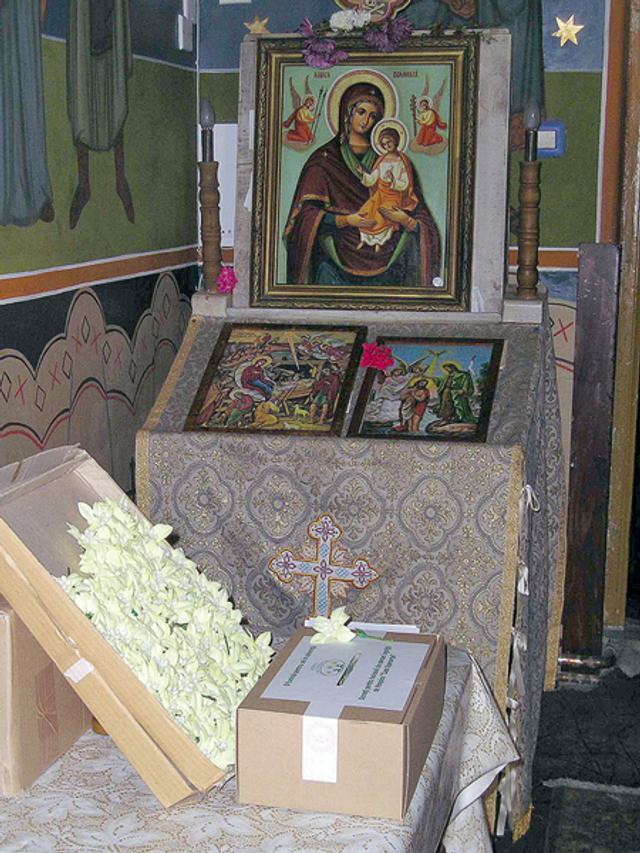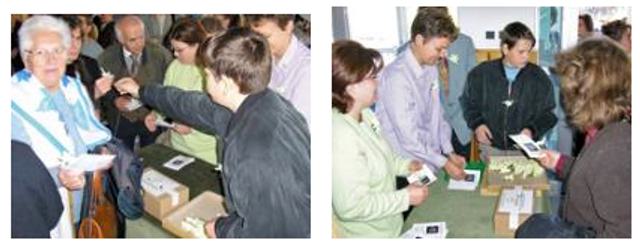Casa Speranti Edelweiss campaign
- Exhibited by
- CSDF Hungary.
- Added
- June 10, 2011
- Medium of Communication
- Broadcast and television, face to face, press advertising, radio
- Target Audience
- Awareness, individuals
- Type of Charity
- Healthcare, public/society benefit
- Country of Origin
- Romania
- Date of first appearance
- November, 2004
SOFII’s view
Public fundraising is an increasingly important but still emerging activity in Romania. Here Casa Speranti correctly identified the power of linking their fundraising initiatives to the church. With a sensitive, potentially delicate subject to raise, the idea to make the beautiful flower the edelweiss (their logo) a symbol of palliative care and to use it as an incentive is inspired. The campaign has recruited regular donors, generated great publicity and doubled in its second year. Well worth copying.
Creator / originator
Mihai Eröss, Community Fundraising.
Summary / objectives

- To raise funds for the Hospice Casa Sperantei (House of Hope) from churchgoers.
- To involve churches of different denominations from Brasov and surrounding villages.
- To get regular support from churches throughout the year.
- To improve the visibility of the organisation through local media.
Background
Hospice Casa Sperantei offers palliative care to adults and children at the advanced stage of a terminal illness.
In 2003, the hospice organised local charitable events in conjunction with the church. Through this experience Casa Sperantei became aware of Romanian people’s trust in the church as an institution and how sympathetic they were to requests made through it.
In 2004 Hospice Casa Sperantei decided to launch their 2004 Edelweiss Week fundraising campaign by asking for donations after regular ceremonies, at 53 local churches. Everyone who made a donation received an Edelweiss flower, the palliative care symbol, to show their support for the cause, the patients and their families.
The main message of the campaign was, ‘Terminally ill patients need help, there is not much time for them to wait. We need to help them now when they need it.’
The campaign worked as follows:
- The hospice created a database of names and addresses of priests and either sent them introductory letters or contacted directly them to ask them to become involved in the campaign.
- The campaign was announced at a press conference.
- The Edelweiss Week campaign opened with art music ‘concertino’.
- Leaflets and posters for the event were printed in several languages.
- Local radio, newspaper and TV were used to promote Edelweiss Week.
- Volunteers were recruited and trained to help with the campaign.
- Presentations about the work of the hospice were made at churches at the end of their ceremonies.
- The hospice collected the donation boxes from the churches.
- A press release with the results from the campaign was issued and letters sent to all contributing churches.
Special characteristics
Involvement of different religious denominations.
Influence / impact
Hospice Casa Sperantei’s successful campaign was built around lessons learned and an understanding of their prospective donors. By doing this they more than doubled – in one year – their number of volunteers and monthly givers, raised more money and achieved more local media awareness about terminally ill children and adults
Results
- 5,000 euros was raised.
- ROI: 8:3
- 53 churches of different denominations from the city of Brasov took part in the campaign (twice as many as in the 2003 campaign).
- Following the campaign two churches became permanent hospice supporters through monthly donations.
- There were 18 volunteers involved, compared to six in the 2003 campaign.
- The campaign received considerable local media coverage.
Merits
Asking for donations at church ceremonies was a simple idea that proved to be very effective given Romanian people’s trust in this institution.
Other relevant information
Adapted from CSDF’s 2006 publication Mission Possible.


Also in Categories
-
















